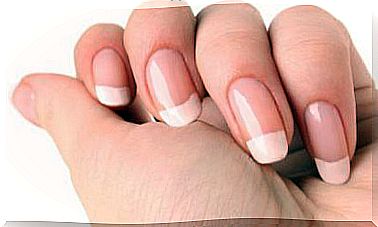What Causes Ehrlichiosis And How Can It Be Treated?
Ehrlichiosis is a disease caused by bacteria of the rickettsial family. They are infections that are transmitted through the bite of infected ticks. There are multiple pathologies that are caused by this reason.
In fact, ehrlichiosis tends to be confused with anaplasmosis or Lyme disease. All are more common in areas such as the west coast of the United States or the northeast of that country.
The problem is that they can lead to very serious symptoms, and may even require hospital admission. Therefore, in this article we explain everything you need to know about ehrlichiosis and how it is treated.
What is ehrlichiosis?
Ehrlichiosis is a disease caused by the bite of infected ticks. Specifically, these ticks can carry different bacteria, such as Ehrlichia chaffeensis , E. ewingii or E. muris eauclairensis.
Pathologies transmitted by tick bites are quite common. Although they may appear similar to each other, like anaplasmosis, they are produced by different microorganisms.
According to a study conducted by the Centers for Diseases Control and Prevention , the incidence of ehrlichiosis increased dramatically in 2018. However, thanks to advances in medicine, treatment is increasingly effective and fatality is lower.
What are the symptoms?
The symptoms of ehrlichiosis are highly variable. Especially depending on how long the tick has been feeding on the patient. Most of the signs, as explained by specialists from the Mayo Clinic, appear between 7 and 14 days after the bite.
Fever, headache, muscle or joint pain are common. Fever is often accompanied by malaise, chills, and fatigue. Many experience nausea, vomiting, and diarrhea.
Unlike anaplasmosis, a skin rash occurs in ehrlichiosis. Coughing and confusion are also common. No less true is that it occurs in a very mild, almost asymptomatic, in some people.
However, in others, it causes disseminated intravascular coagulation. It is a phenomenon that causes clots to form in many parts of the body. This is why it can lead to organ dysfunction, seizures, and coma.
Cause of ehrlichiosis
Ehrlichiosis is caused by the bite of infected ticks. They are arthropods that feed on blood.
When they bite a person, the microorganism with which they are infected is transmitted to the blood of that patient. Most often, it is caused by the bacterium Ehrlichia , transmitted by a tick called the lone star .
For this disease to develop, the tick must be in contact with the blood for 24 hours. It is also possible that it is transmitted through a transfusion or passed from mother to child during pregnancy.
Risk factor’s
Although ehrlichiosis can affect a person of any age or gender, it has been seen that there are a number of factors that increase the risk of suffering from it.
For example, living in a country area with a lot of ticks or visiting it frequently. In addition, it is usually more common in men, since there are still a greater number of them who work in the field.
Similarly, you are more likely to get ehrlichiosis if you spend a lot of time outdoors in spring or summer. This is the time of year when the weather is warmest and ticks are most active.
How is it diagnosed?
The diagnosis of ehrlichiosis can be complex. It is very easy to confuse it with another pathology caused by ticks. Especially since the symptoms are similar and the only information that the patient usually tells is the memory of the bite.
Complementary tests are needed to guide the diagnosis. They are especially useful in cases where it is unknown whether or not there has been a bite.
The first test to perform is the blood test. The number of white blood cells is often low, as the bacteria attack them. A low platelet count may also be seen, especially if disseminated intravascular coagulation occurs.
In addition, it can be supplemented with a polymerase chain reaction (PCR) test. PCR identifies the specific genetic material of the microorganism.
Treatment of ehrlichiosis
In order to treat ehrlichiosis, try to remove the tick from the patient’s body. According to an article from the New York Department of Health, the tick is held with tweezers as close to the skin as possible.
Do not press or crush the body of the same, since it can split and remain the head inside or release infectious substances. Once it has been started, the area must be disinfected. It is essential to avoid home remedies, such as Vaseline, or burn the tick.
On the other hand, to treat ehrlichiosis it is essential to administer antibiotic medications. As stated in the MSD Manual, the most widely used is doxycycline. Rifampicin is usually prescribed for pregnant women for a minimum of 7 days.
If treatment is started early, it is usually effective. It is estimated that between 2% and 5% of patients end up dying.
Possible complications
Ehrlichiosis, like other tick-borne diseases, must be treated early. Otherwise, a series of complications may appear that put the health of the organs at risk.
For example, kidney, heart or respiratory failure may appear. It has also been linked to seizures and coma. If the sick person has a weakened immune system, they are at greater risk of fatal consequences.
Can ehrlichiosis be prevented?
The only way to prevent ehrlichiosis is to avoid tick bites. For this reason, you have to take care of your outfit every time you go to areas where there are usually tick populations.
For example, wearing long pants and long-sleeved shirts. Ideally, tuck the shirt into the pants, while covering the pants with socks. Thus, the arthropod cannot be sneaked anywhere.
It is preferable that the clothes be light colors, so that you can see the tick if it lands on it. Shoes must also be closed; Sandals are not recommended in wooded areas or in the countryside.
Once you get home, you have to do a good exploration of the body. If a tick is visible, it must be eliminated as quickly as possible. That is why it is also appropriate to look at the clothes that have been worn or wash them directly.
Another tip to prevent ehrlichiosis is to use repellent. Specifically, DEET or permethrin, which can be applied to clothing. They are delicate products that must be used with caution.
Ehrlichiosis should be treated urgently
As we have seen, ehrlichiosis is a disease transmitted by tick bites. There are many other similar pathologies with the same cause. What we must bear in mind is that any of them must be dealt with urgently.
Therefore, if you are going to the field or to another area where there are many ticks, you must be careful. It is also essential to always consult a doctor if there has been a sting. The sooner treatment is started, the lower the chance of complications.









